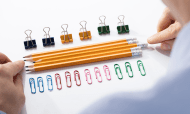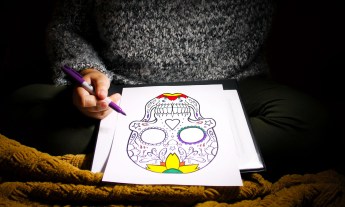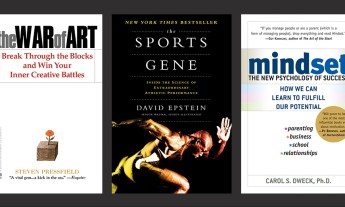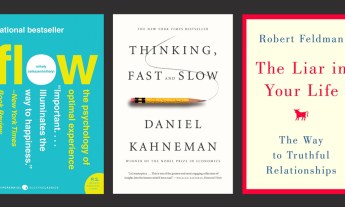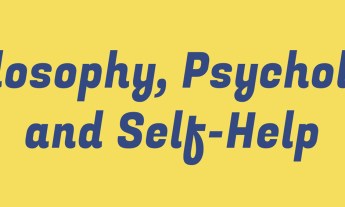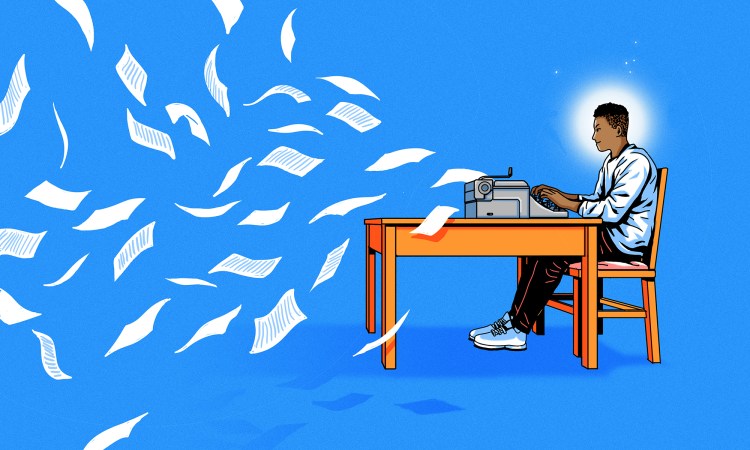
This post is part of TED’s “How to Be a Better Human” series, each of which contains a piece of helpful advice from people in the TED community; browse through all the posts here.
When was the last time you felt fully engaged in a task and the hours just melted away?
That’s your flow state, something that psychology researcher Mihaly Csikszentmihalyi, from Claremont Graduate University in California, identified. And it’s something we’ve all experienced before.
The good news is that we don’t have to wait for a flow state to happen — we can take steps that can allow us to access it.
Yes, you can experience the benefits that come with it more often, including being self-motivated, more productive, and more empowered, according to violinist and keynote speaker Diane Allen, who’s become an expert at helping people find their flow state. Finding your flow state can guide your career, relationships, and even your hobbies.
When you hear “flow” you might think of musicians, athletes, yoga practitioners or scientists in the lab. But “flow state is something that happens to all of us,” says Allen — it’s not just for creatives, academics or athletes. “When you get that high or euphoria, it’s liberating,” she adds, and finding her flow state onstage as a musician helped her overcome shyness and performance anxiety offstage.
Flow is simply that optimal state of mind in which we feel and perform our best, and it doesn’t have to be mysterious or elusive. Here’s how to gain awareness of your flow state and what you can do to tap into it more often.
Identify when you’re naturally in your flow state
Many people have experienced flow state without knowing that’s what it was. One of the key indicators of being in flow state is losing a sense of time. Ask yourself: When have hours passed by without your realizing it? Perhaps you were so engrossed with painting that you didn’t hear your phone, or you were working on a PowerPoint presentation so intently that you didn’t notice the sunset.
Another indicator of flow state is having a sense of ease, when things feel like they just click into place. It might even come in the moments when you have new ideas and insights, and “you put things together in ways you’d never put them together before,” says Allen.
Flow state often features a positive feedback loop. The more engaged you are with a task, the more positive feedback you receive, which encourages you to keep going.
There are some caveats, however. You may feel like you’re in the flow state during activities — like reading a book, binge-watching TV, or playing video games — because you lose all sense of time but they’re not the flow state, says Allen. Those are passive activities, and something outside of you, like the book or the game, is captivating you. “The actual flow state is when you’re somehow active,” says Allen, pointing to activities like playing the violin, writing, playing tennis, or leading a meeting.
Learn how to get into it by working backwards
Once you know when you’ve experienced that effortless feeling, you can determine how you got there. Allen recommends recreating the memories of when you were in flow state and examining them.
First, you must observe yourself. For the next two weeks, Allen suggests, observe yourself, notice what you’re doing, and look for the key indicators of flow: losing your sense of time or self, feeling that you’re acting with ease, gaining new insights, and having a positive feedback loop.
Then, when you are in a state of flow, broaden your awareness: Notice and remember the activities surrounding you. Distinguish what you’re physically doing when you lose all sense of time or have a sense of ease. Perhaps you’re on stage, writing or gardening. In addition, think about what you’re doing mentally. Are you engaged in acts of service? Sharing? Creating a sense of unity or community? Are you problem solving? Immersed in deep focus or deep listening?
Allen worked with one client who found his flow state whenever he was racing bicycles. Physically, he was outside and exercising. But his internal emotions went deeper: he wanted to support his teammates and create synergy among them. His flow state involved not only cycling, but being engaged in a group dynamic.
Another example: Allen worked with the chief operating officer of a healthcare institution — she was very quiet and had received feedback that she lacked leadership qualities. Working together, they determined that she got into the flow state when she had quality one-on-one time with other people and was able to speak and listen deeply.
Guided by this realization, she said at her next group meeting at work: “I need to listen to each and every one of you.” By doing so, she was able to get into her flow state and she was able to take in everyone’s feedback. By tapping into her flow state, she was able to effectively communicate her own style of leadership.
Understanding the benefits of flow can reinforce the habit
The more you experience the rewards of the flow state, the more you’ll want to return. “People slip into flow on a daily basis, and they shut it down,” says Allen. “They might say, ‘It’s unrealistic, it’s not practical, or I don’t have time for that.'” But if flow leads you to your best self, you’re more likely to experience fulfillment, solve problems, overcome fear, and influence others.
Start trying to shift into your flow state on purpose
It’s not necessary to wait for lightning — or your flow state — to strike. Instead, easing into flow can become a repeatable routine, much like brushing your teeth, taking out the trash, or hitting play on that next episode on Netflix. “The more practice you have, the more you can snap into a flow state,” says Allen. To get there, she advises people to keep noticing the physical and emotional steps that lead up to flow — Where are you? What are you doing? How are you feeling? — and repeat them.
Everyone gets into their flow state in a different way. You might be really good at problem solving with data on Excel sheets, and you’re best when you’re left alone to find solutions. Or, you might be at your best when you’re giving and receiving feedback and you’re a champ at leading a group of salespeople.
When you make your flow state more accessible and repeatable, you’re setting the stage for your best self to show up more often. And you might just find that you can pass on these benefits to others.
“Flow is contagious,” says Allen. “When we are in that positive feedback loop, it’s also contagious to others. That’s how I led the orchestra and the audience with my energy.” The more you’re in flow, the more others will be, too. As Allen says, “Being in the flow state brings out the best in all of us.”
Watch her TED talk now:







